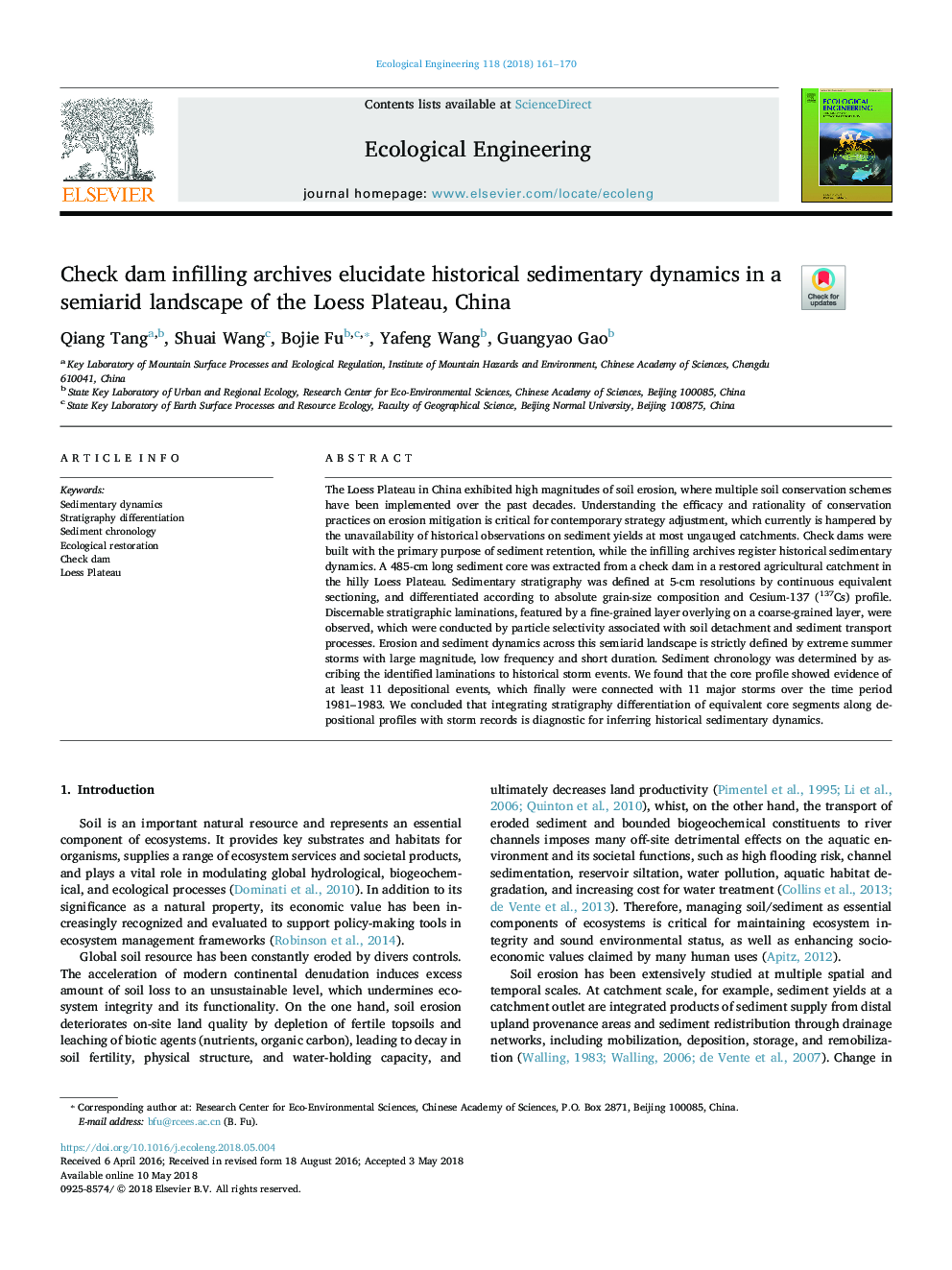| Article ID | Journal | Published Year | Pages | File Type |
|---|---|---|---|---|
| 8847848 | Ecological Engineering | 2018 | 10 Pages |
Abstract
The Loess Plateau in China exhibited high magnitudes of soil erosion, where multiple soil conservation schemes have been implemented over the past decades. Understanding the efficacy and rationality of conservation practices on erosion mitigation is critical for contemporary strategy adjustment, which currently is hampered by the unavailability of historical observations on sediment yields at most ungauged catchments. Check dams were built with the primary purpose of sediment retention, while the infilling archives register historical sedimentary dynamics. A 485-cm long sediment core was extracted from a check dam in a restored agricultural catchment in the hilly Loess Plateau. Sedimentary stratigraphy was defined at 5-cm resolutions by continuous equivalent sectioning, and differentiated according to absolute grain-size composition and Cesium-137 (137Cs) profile. Discernable stratigraphic laminations, featured by a fine-grained layer overlying on a coarse-grained layer, were observed, which were conducted by particle selectivity associated with soil detachment and sediment transport processes. Erosion and sediment dynamics across this semiarid landscape is strictly defined by extreme summer storms with large magnitude, low frequency and short duration. Sediment chronology was determined by ascribing the identified laminations to historical storm events. We found that the core profile showed evidence of at least 11 depositional events, which finally were connected with 11 major storms over the time period 1981-1983. We concluded that integrating stratigraphy differentiation of equivalent core segments along depositional profiles with storm records is diagnostic for inferring historical sedimentary dynamics.
Related Topics
Life Sciences
Agricultural and Biological Sciences
Ecology, Evolution, Behavior and Systematics
Authors
Qiang Tang, Shuai Wang, Bojie Fu, Yafeng Wang, Guangyao Gao,
